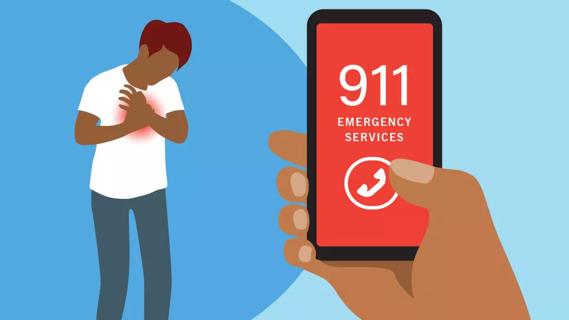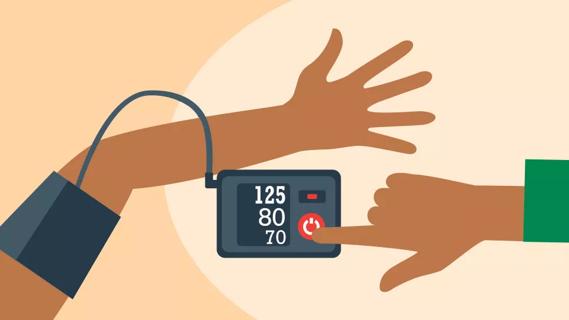Surgery (but not stenting) protects those with stable coronary disease

When coronary artery disease has narrowed one of your arteries by 70%, your risk of having a heart attack becomes a concern. Now’s the time to discuss revascularization.
Advertisement
Cleveland Clinic is a non-profit academic medical center. Advertising on our site helps support our mission. We do not endorse non-Cleveland Clinic products or services. Policy
Until recently, choosing the best revascularization procedure was relatively straightforward:
But now that millions of patients have undergone these procedures, other factors have come to light. Leading cardiologists recently presented evidence that PCI and CABG don’t have the same long-term impact.
“CABG provides what we call a ‘field protection effect.’ Not only does it prevent the culprit lesion from causing a heart attack. It also protects against future heart attacks caused by lesions that may develop in the same artery,” heart surgeon Faisal Bakaeen, MD, explains. “To this end, CABG improves long-term survival.
“Stents do a good job of treating individual lesions, but they cannot protect against a future lesion. As such, they cannot protect against future heart attacks or improve survival.”
Coronary artery disease is a disease caused by atherosclerosis. (That’s when fatty plaques accumulate inside your artery walls.) These buildups can cause a vessel to become so narrow that blood can no longer pass through it. Plaques also can rupture, spilling their contents into the artery and causing a clot that stops blood flow. Either way, the result is a heart attack.
Advertisement
When a heart attack occurs, the area of heart muscle that’s nourished by the affected artery is starved of oxygen and can die. Revascularization — with either PCI or CABG — reestablishes adequate flow of freshly oxygenated blood to these areas.
The benefits of revascularization are directly related to the extent of the disease (which is called disease burden). When someone has significant disease throughout their coronary arteries, CABG can extend their life.
“Even if the disease hasn’t progressed far enough to worry about an imminent heart attack, improving blood flow to the heart muscle will protect against a future heart attack,” says Dr. Bakaeen.
The greater your disease burden, the more significantly you can benefit from CABG. Take diabetes, for example. Diabetes speeds up the development of coronary artery disease, increasing the risk of an early heart attack.
“In these patients, CABG has demonstrated clear superiority over PCI in terms of survival and preventing future heart attack,” says Dr. Bakaeen.
Most heart attack-causing lesions occur in the upper one-third of an artery. CABG bypasses these lesions and much of the remaining artery by attaching the bypass graft far downstream in an area that’s less vulnerable to disease.
As the disease continues to evolve in the artery, the bypass graft continues delivering oxygenated blood to the heart muscle nourished by the artery. This is how CABG prevents future heart attacks from occurring.
PCI can’t do this. “PCI only addresses a single lesion. It cannot protect an artery that develops a new lesion upstream or downstream from the stent,” says Dr. Bakaeen.
“Moreover, the stent itself can become narrowed or clot,” Dr. Bakaeen adds. “When this happens, blood flow stops. Because there is no alternative route for blood to follow, the heart muscle can die.”
PCI offers different advantages. PCI focuses on treating acute (severe and sudden) lesions that limit or stop blood flow. This makes it ideal when a single blockage is causing a heart attack.
“You stent it, allow the patient to recover and then discuss what to do next to prevent another heart attack,” says Dr. Bakaeen.
There are times when someone’s overall condition makes PCI a safer choice too. For example, when they also have another existing condition like severe lung disease, liver disease or extreme age. In such cases, the risks associated with surgery may be greater than the risk of heart attack.
In general, however, the new thinking is to look beyond the immediate effect of treatment to its long-term impact.
“If the goal is preventing future heart attacks, CABG is the answer,” says Dr. Bakaeen.
It’s important to know that not all CABGs are created equal.
Advertisement
For patients to benefit from CABG, bypass grafts must stay open a long time. How is this best accomplished? It’s by using arteries as grafts to important coronary vessels. That’s because arteries are less vulnerable than veins to plaque formation.
The gold standard CABG graft is the left internal mammary artery (LIMA) to the LAD, the heart’s most important artery. In appropriate patients with multivessel disease, Cleveland Clinic surgeons also use the right internal mammary artery and an artery from the arm as bypass grafts to other important arteries.
“The benefit of using these additional arterial grafts is not as profound as with the LIMA to LAD, but they add protection against future heart attack while improving quality of life,” says Dr. Bakaeen. “Our own research suggests that using these additional arterial grafts instead of veins translates into survival benefit starting five to seven years later.”
The ongoing ROMA trial is designed to confirm this finding, but results won’t be published for five to 10 years. “In the interim, we tailor the CABG operation to each patient to ensure the best possible results,” says Dr. Bakaeen.
This article was adapted from Cleveland Clinic Heart Advisor.
Advertisement
Advertisement
Learn more about our editorial process.
Advertisement

Cleveland Clinic study used data of 880,000+ participants

Absolutely! In fact, in many ways, exercise is key to recovery

There’s no way to stop it once a heart attack is happening, but the most important thing you can do is to call for help

You can counter the risk of prediabetes-related heart attack or stroke by eating more fruits, vegetables and whole grains, as well as exercising regularly

An ideal blood pressure is less than 120 mm Hg systolic and less than 80 mm Hg diastolic

To help determine what you’re experiencing, focus on how the pain feels, the location of the pain, when it started and how long it lasts

Stopping this critical medication on your own increases the risk of heart attack, stroke and more

The emotional toll of loss and other strong emotions can have life-threatening physical effects

Type 2 diabetes isn’t inevitable with these dietary changes

Applying a hot or cold compress can help with pain